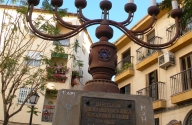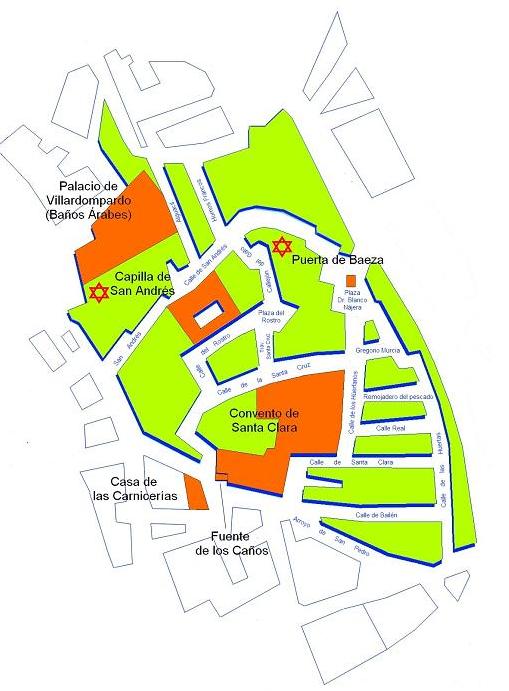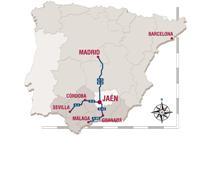- es
- en
Jaén Jewry

Jewish Golden Age in Spain
Jaen’s strategic location in the Upper Guadalquivir lands, accessible towards Andalucia from Levante and Meseta, promotes the cultural exchange between different people. This traditional sense of tolerance explains the early presence of Jewish people in our city, documented for the first time in 612, but probably dating further back in time. Jaen’s Hebrews have coexisted since ancient times with Romans, Visigoths (firstly Arians, then Christians), Muslims and again, later, with Christians, until they were expelled at the end of 15th century.
The importance of Jaen’s Juderia (Jewish quarter) was represented in a very special way by Hasday Ibn Shaprut, Cordoba’s Caliph Counsellor. He promoted Spanish Hebrew poetry and was the pioneer in 10th Century of "Spain’s Jewish Golden Age"; his relations with the Khazaros Jewish kingdom, or possibly the introduction of Eastern- inspired rabbi academies in Al-Andalus, brought him fame as a "universal man." Part of the Ziri kingdom of Granada, in the 11th century, allowed Jaén to keep its distinctive mark as a city of wisdom, this spirit of communication between different cultures remained upon the Christians arrival.
1391's persecutions marked the beginning of the end of the collaboration period between the three great medieval cultures. The "Aljama” of the city was replaced by a Jewish quarter renamed as "Santa Cruz." Jaén’s Jewish people’s deep attachment to their city (some of them lied about their religious conversion and kept their Hebraic rites and ceremonies in secret) and their resistance led to the arrival of the Court of inquisition (Jaén was the third city of Andalusia) in 1489, coinciding with the general decree that expelled Jewish people from Andalucia. The beautiful Renaissance Cathedral hosted a vast number of converted administrators for years; although in this place the "cleanliness of blood" regulations were born. In the same square of the main church further acts of faith took place.

The Jewish quarter of Jaén is located between the current San Andrés, Huerfanos, the Caños-Arroyo de San Pedro and Martinez Molina streets, part of the walled city’s bailey; a narrow group of houses and the typical Muslim layouts distinguish the quarter, communicating with the outside only by three points of access, one of them being "Puerta of Baeza". The synagogue was attached to Santa Clara monastery; Ibn Saprut’s house was located in front of Cadí House in Magdalena square. The great Jaen’s Arab Baths, XI century, are the largest preserved in Spain, with access from the parade of Villadompardo palace, used on Fridays, Sabat´s eve for Jewish people; in the same period other Baths were supposed to exist near San Andrés chapel, known as Hammam Ibn Ishaq (Isaac’s sons’ baths). San Andrés church is thought to be a former synagogue due to its structure.
In Huerfano square we can see a big “menorah” with Spanish and Sephardic engraving that says: "the traces of who were together could never be forgotten". Jaén has been a member of the National Jewish quarter Network "Caminos de sefarad" since 2005, a non-profit public association whose main objective is to protect the urban, architectural, historical, artistic and cultural heritage of the Spanish Sephardic legacy. (www.redjuderias.org).


















